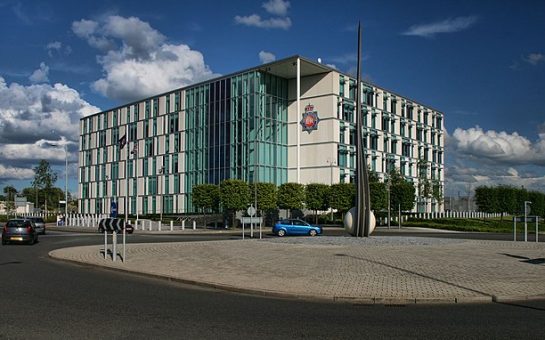Tasers should not be over-used, warned a police watchdog almost a year on from the death of Gorton stun-gun victim Jordan Begley.
The number of incidents involving the immobilisers have shot up by 232%, while complaints also followed a similar pattern and rose from 44 to 137 (an increase of 211%) between 2009-2013.
Begley, 23, was killed last August when he suffered a ‘medical episode’ after a police officer stunned him with the weapon at his home. The investigation into his death is still to be concluded.
IPCC Commissioner Cindy Butts said: “The IPCC has always accepted that there are legitimate reasons for using Taser in policing and that it can be a valuable tool in assisting police officers to manage difficult and challenging situations.
“However, in light of the significant increase in Taser use, it is important to ensure that the device is being used appropriately and not as a default choice where other tactical options, including communication, could be effective.
“For that reason, it is very important that each individual use can be justified and that forces closely analyse the extent and type of use.”
The Independent Police Complaints Commission (IPCC) report, released today, also suggested police forces should avoid over-using the measure – which was brought in 11 years ago – especially on the vulnerable, young or those in custody.
Taser uses and referrals have almost trebled in the five years since specially-trained units were introduced in 2008.
The IPCC received 59 referrals in 2009 from 3,128 record uses – but those figures shot up to 154 and 10,380 respectively by 2013.
The second biggest force in the UK, Greater Manchester Police saw 816 uses among their 7,323 Taser-trained officers last year, which amounted to 11 uses per 100 officers.
Only smaller neighbouring force Lancashire Constabulary had a similar number of uses per 100 officers in the North West, also on 11, while Merseyside Police saw only three uses.
Nationally, London‘s Metropolitan Police had the most incidents of recorded uses with 2,110 but the 31,435-strong force saw only seven uses per hundred officers.
Staffordshire Police led the way with 33 uses per 100 officers, demonstrating the IPCC’s warnings that local forces should guard against the possibility that it is being over-used.
The IPCC’s analysis of Home Office data shows considerable disparity in Taser use between forces, with some smaller forces having a proportionately much higher rate of Taser use in relation to their size.
Since the non-lethal measure was introduced, the number of operations in which the use of police firearms is authorised has decreased every year from 2007/08 to 2012/13.
However, in 2007, the use of Taser was authorised in a much wider range of situations – where there is a threat of severe violence –and extended to a larger number of police officers.
The report also stressed that Taser use should be closely-analysed and each use robustly justified to ensure the device is being used appropriately and not as a default when other options may be available, such as a baton or CS gas spray.
IPCC investigations examined Taser use on people who are in police custody and they say this is only justifiable in exceptional circumstances, taking into account the controlled nature of the custody environment.
While in relation to the use of Taser on young people or those with mental disorders, the IPCC considers that all decisions on the use of Taser should take into account the specific vulnerabilities of an individual and these considerations should be recorded in officers’ justifications.
The IPCC has previously raised ‘major’ concerns about the use of the device in drive-stun mode (when the Taser is applied directly to the body rather than the cartridge being fired from a distance).
IPCC Commissioner James Dipple-Johnstone said: “The IPCC has major concerns about the use of Tasers in drive-stun mode, where the Taser is applied directly to the body without a cartridge rather than fired from a distance.
“When used in this way it is purely a means of pain compliance. Yet in several of the cases we reviewed, where it was used for the purpose of gaining compliance, it had the opposite effect, stimulating further resistance.”
An ‘obvious mismatch’ in the public perception of the device was also noted in the report after it was used in several high-profile cases that led to deaths.
Begley’s tragic death, which saw allegations of mistaken identity levelled at GMP as a 25-year-old from Sale with the same name was also wanted at the time, involved the use of a Taser, but the cause is yet to be determined.
The death of Philip Hulmes in August 2011 after a Taser discharge saw the IPCC quiz GMP but was ruled as suicide.
And in the case of Raoul Moat, who shot himself after being Tasered during a police stand-off in Northumbria back in 2010, the use of the stun gun was not adjudged to have caused his death.
The above cases are just a few of the eleven referrals involved someone having died with eight investigations completed and none of them has seen the use of a Taser directly caused a death.
And the IPCC hit back, stating it ‘is aware of cases where Taser is said to have saved lives and reduced injuries both to the public and the police’ in defence.
Further recommendations in the report include wider safety training for non-Taser equipped officers working with trained officers and ensuring the selection process for stun gun-armed officers and subsequent supervision is robust.
For the full IPCC report, click here.
Image courtesy of jasonesbain, with thanks.



